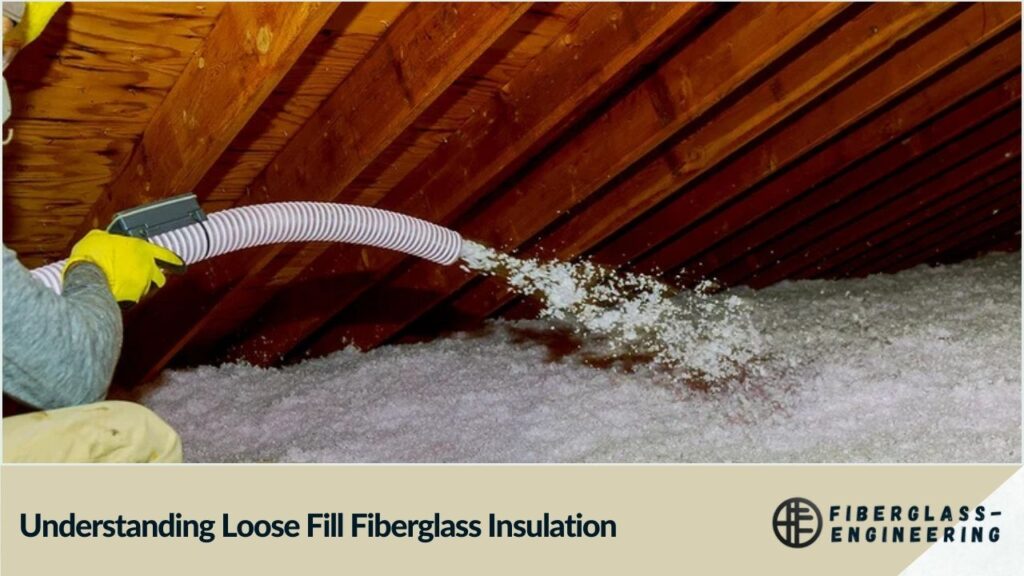As winter approaches, homeowners are increasingly concerned about keeping their homes warm and energy-efficient. One of the most effective ways to achieve this is by properly insulating the attic. Two popular options for attic insulation are loose fill fiberglass and cellulose. Both materials have their strengths and weaknesses, but which one is better for winter attic insulation? Let's dive deep into the comparison to help you make an informed decision.
Understanding Loose Fill Fiberglass Insulation

Loose fill fiberglass insulation is made from tiny strands of glass that are blown into the attic space using specialized equipment. This type of insulation works by trapping air within its fibers, creating a barrier that slows down heat transfer.
Key characteristics of loose fill fiberglass:
- Composed of recycled glass and sand
- Lightweight and easy to install
- Non-combustible material
- R-value ranges from 2.2 to 2.7 per inch
Fiberglass insulation has been a popular choice for decades due to its affordability and ease of installation. It's particularly effective in preventing heat loss through conduction, which occurs when heat transfers through materials in direct contact with each other.
Understanding Cellulose Insulation
Cellulose insulation, on the other hand, is made primarily from recycled paper products, typically newspaper. The material is treated with fire retardants and pest deterrents before being blown into the attic space.
Key characteristics of cellulose insulation:
- Made from up to 85% recycled materials
- Denser than fiberglass
- Treated for fire resistance and pest control
- R-value ranges from 3.2 to 3.8 per inch
Cellulose insulation is known for its superior ability to block airflow, which makes it particularly effective at preventing heat loss through convection – the transfer of heat through air movement.
Comparing Performance in Winter Conditions
When it comes to winter attic insulation, both materials have their strengths, but cellulose often edges out fiberglass in several key areas:
- R-value: Cellulose typically has a higher R-value per inch compared to fiberglass. This means that you can achieve better insulation with less material thickness.
- Air sealing: Cellulose's density allows it to fill gaps and crevices more effectively, providing better air sealing. This is crucial for preventing warm air from escaping your home during winter.
- Settling: While both materials can settle over time, cellulose tends to settle less than loose fill fiberglass. This means it maintains its insulating properties better in the long run.
- Moisture handling: Cellulose can absorb and release moisture without losing its insulating properties, as long as the source of moisture is addressed. Fiberglass, however, can lose its effectiveness when wet.
Installation Considerations
The installation process for both materials is similar, requiring specialized blowing equipment. However, there are some differences to consider:
- Fiberglass installation: Tends to be quicker and creates less dust during installation. However, it requires careful attention to achieve uniform coverage.
- Cellulose installation: May take slightly longer and create more dust, but its ability to conform to spaces often results in a more thorough coverage.
It's crucial to note that proper installation is key for both materials. Inadequate installation can significantly reduce the insulation's effectiveness, regardless of the material chosen.
Environmental Impact
For environmentally conscious homeowners, the choice between fiberglass and cellulose can be significant:
- Cellulose is often considered more eco-friendly due to its high recycled content (up to 85%) and lower embodied energy in production.
- Fiberglass, while also containing recycled materials (typically 20-30%), requires more energy to produce.
Cost Comparison
The cost difference between cellulose and fiberglass can vary depending on your location and the specific products used. Generally:
- Fiberglass tends to be slightly less expensive upfront.
- Cellulose may have a higher initial cost but can offer better long-term value due to its higher R-value and superior air-sealing properties.
Long-Term Performance
When considering winter attic insulation, it's essential to think about long-term performance:
- Cellulose tends to maintain its R-value and shape better over time, especially in extreme temperature fluctuations common in attics.
- Fiberglass can lose some of its insulating properties in very cold temperatures and may compress more easily over time.
Health and Safety Considerations
Both materials have safety considerations:
- Fiberglass can cause skin and respiratory irritation during installation if proper protective equipment isn't used.
- Cellulose dust can also be an irritant, but it's generally considered less problematic than fiberglass.
Both materials are treated with fire retardants, but cellulose is often considered to have better fire-resistant properties.
Making the Right Choice for Your Home
While cellulose often outperforms fiberglass in winter attic insulation, the best choice depends on your specific circumstances. Consider factors such as:
- Your local climate
- The current state of your attic insulation
- Your budget
- Environmental concerns
- Long-term plans for your home
It's highly recommended to consult with a professional insulation contractor who can assess your specific needs and provide tailored advice.
Conclusion
Both loose fill fiberglass and cellulose insulation can significantly improve your home's energy efficiency during winter. However, cellulose often provides superior performance in terms of R-value, air sealing, and long-term effectiveness. Its eco-friendly composition and better moisture-handling capabilities make it an attractive option for many homeowners.
Ultimately, the best choice depends on your specific needs, budget, and priorities. Whichever material you choose, proper installation is key to maximizing its insulating properties and ensuring a warm, energy-efficient home throughout the winter months.
FAQs
- Which insulation has a higher R-value?
Cellulose typically has a higher R-value per inch than fiberglass. - Is cellulose or fiberglass more eco-friendly?
Cellulose is generally considered more eco-friendly due to its higher recycled content. - Which insulation is better at air sealing?
Cellulose provides better air sealing due to its higher density. - Is fiberglass or cellulose cheaper to install?
Fiberglass is often slightly cheaper upfront, but cellulose may offer better long-term value. - Can I install attic insulation myself?
While possible, professional installation is recommended for optimal performance and safety.

